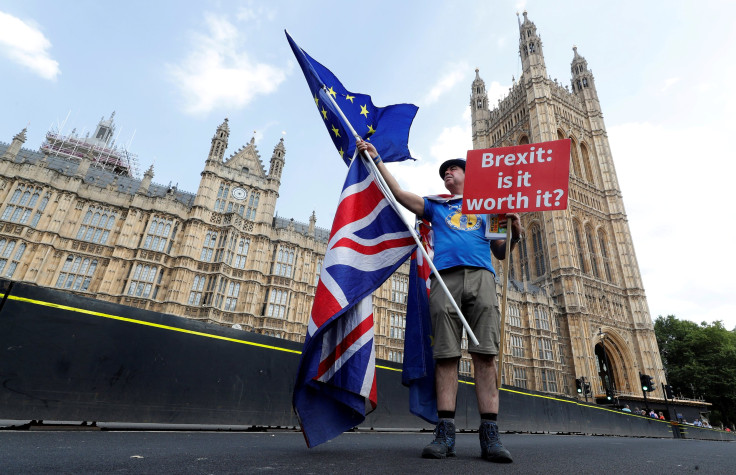Brexit: yes, constituencies have moved to Remain, and here's why that could matter

Much excitement has been created by an analysis of YouGov polling data released by the anti-Brexit Best for Britain campaign and first reported by The Observer. The analysis identified 112 constituencies where it had previously been estimated by Chris Hanretty that a majority of voters had voted to Leave in 2016 but where a majority were now estimated to be in favour of Remain. Described by Best for Britain as “a monumental shift in public opinion”, the impression, at least, was given that the analysis was evidence of a significant new swing of public opinion in favour of Remain.
The reality, however, was more prosaic. The polling data on which the analysis was based was – primarily, though not exclusively – a large 10,000 sample poll conducted earlier this month by YouGov for another anti-Brexit campaign, The People’s Vote, which is campaigning for a referendum on whatever Brexit deal eventually emerges. The data were reported as showing that support for Remain across the country as a whole now stands at 53%, while support for Leave was estimated to be 47% (which, indeed, were the figures that had previously been published for the People’s Vote poll in particular).
That, of course, represents a five-point swing from Leave to Remain as compared with the result of the 2016 referendum, when Leave won 52% and Remain 48%. But it is more or less in line with other polling conducted during the past three months. That, on average has put Remain on 52%, Leave 48%. So there is no evidence in these numbers of a significant new swing to Remain. Rather it simply represents confirmation of other recent polling that Remain appears to be slightly ahead.
Key constituencies
However, that still leaves the estimate of 112 constituencies where in 2016 there was a Leave majority but where Remain is now thought to be ahead. That sounds like a lot of constituencies. Indeed, it is sufficient to ensure that, in contrast to the position in 2016, more than half (341) of the 632 constituencies in Britain are now thought to contain a majority of Remain supporters.
But the figure is just a reflection of the relatively even spread of the Leave vote across much of provincial England together with Wales in the 2016 referendum. There were no less than 115 constituencies in 2016 where Hanretty estimated that Leave won between 50% and 55% of the vote. If the 5% swing since 2016 implied by YouGov’s polling had occurred in each and every constituency, that would be sufficient to turn all of these 115 seats from being majority Leave seats to majority Remain constituencies – albeit only narrowly.
In other words, it would be surprising if any analysis of polling based on a 53% Remain vote across the country as a whole did anything other than identify over 100 constituencies where the majority outcome would now be different.
True, the analysis that underlay Best for Britain’s headline figure did much more than simply assume the whole country had swung to the same extent. The statistical technique that was used employs polling data to identify the probability that voters with particular characteristics will vote Remain or Leave, examines government statistics and other sources to calculate the proportion of people with those characteristics in each constituency and then combines the two to estimate the likely outcome of a ballot in each seat.
Consequently, if particular kinds of voters (perhaps in particular kinds of places) have swung from Leave to Remain, then the analysis should find a bigger swing to Remain in places with more such voters – and, conversely, a lower swing elsewhere. But the fact that the analysis emerged with more or less the same number of seats swinging from Leave to Remain as would be anticipated from a uniform movement across the country as a whole means that the estimated variation in the swing had little or no net impact on the total number of seats whose status is thought to have changed.
What does change
But that doesn’t mean that the variation which is said to have been identified is not of interest. One of the aims of those currently campaigning against Brexit appears to be to try to persuade the Labour party, in particular, to change its stance and at least come out in favour of a second referendum – if not indeed to oppose Brexit entirely.
Thus, it was notable that the Best for Britain analysis is reported as showing that the swing from Leave to Remain “has been driven by doubts among Labour voters who backed Leave” and that, consequently, it is greatest in Labour heartlands in the North of England and Wales.
Doubtless anti-Brexit campaigners are hoping that this finding will help persuade Labour MPs representing constituencies where a majority voted Leave in 2016 that a change in the party’s stance would not be so harmful electorally as some of them at least seem to fear. Those fears might always have been exaggerated given that as we have previously shown even outside London, a majority of Labour voters in Labour seats voted for Remain, but are real nonetheless. Best for Britain’s findings may not have been as dramatic as they were portrayed, but they may yet play an important role in Labour’s debate about what to do about Brexit.
John Curtice, Professor of Politics, Strathclyde University
This article was originally published on The Conversation. Read the original article.






